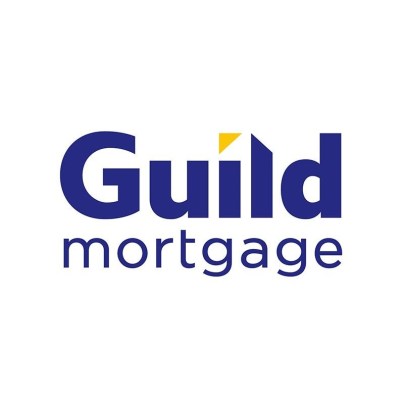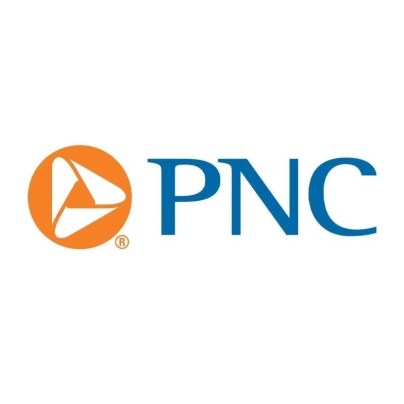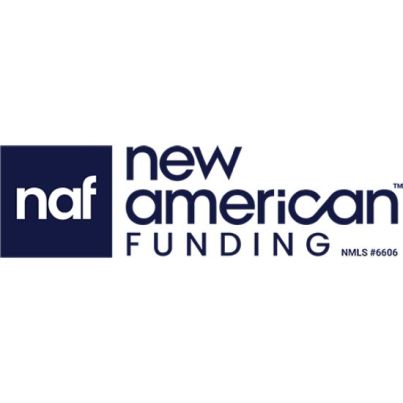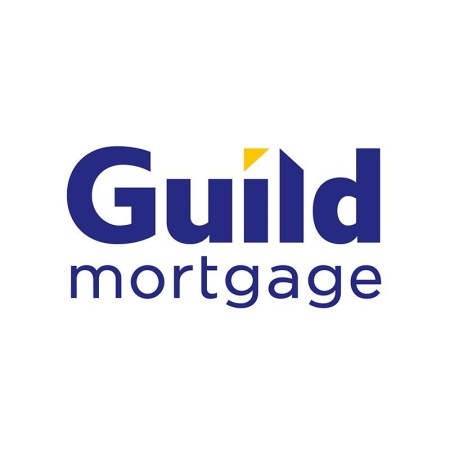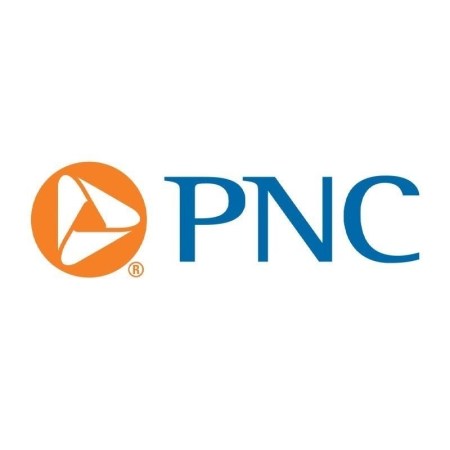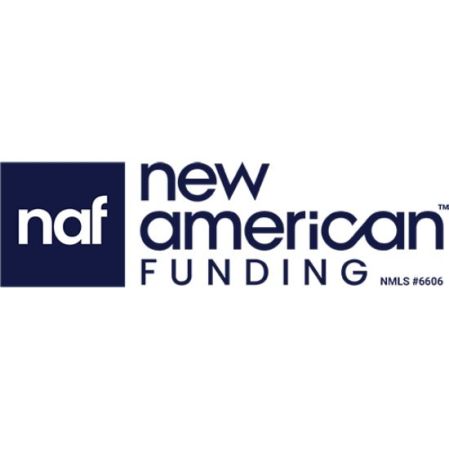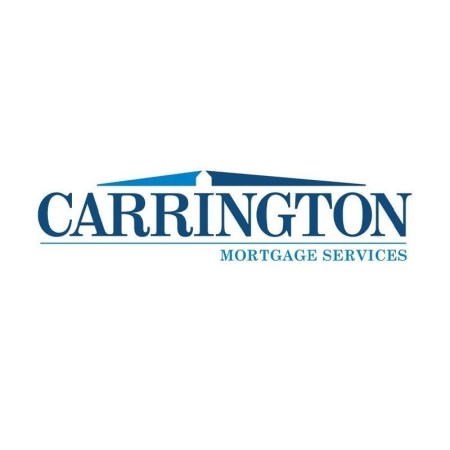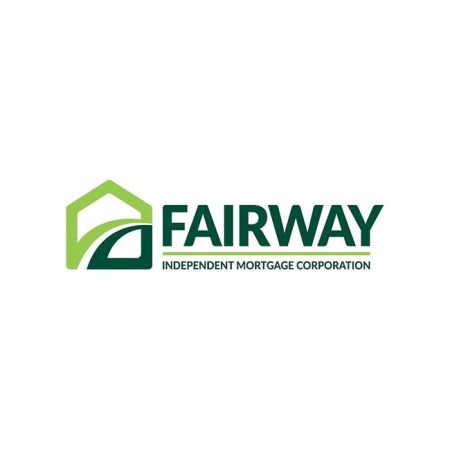We may earn revenue from the products available on this page and participate in affiliate programs. Learn More ›

Backed by the U.S. Department of Agriculture, USDA loans assist borrowers with low-to-moderate incomes looking to purchase or rehab homes in eligible rural areas. These loans remove many of the barriers associated with traditional home loans that prevent some borrowers from qualifying for a mortgage, including down payment and credit score requirements. USDA mortgage loans also typically have competitive interest rates and long repayment periods, which could result in a low monthly payment that is manageable for the borrower. The best USDA lenders will be well versed in these USDA loan requirements and can help home buyers navigate the approval process and qualify for financing. The best USDA lenders may offer different loan terms, financing options, and benefits to consider, so it’s a good idea for potential borrowers to explore all options before making a decision.
- BEST OVERALL: Guild Mortgage
- RUNNER-UP: PNC Bank
- BEST CLOSING COSTS: New American Funding
- BEST LOW-CREDIT OPTIONS: Carrington Mortgage Services
- ALSO CONSIDER: Fairway Independent Mortgage Corporation

What to Consider When Choosing One of the Best USDA Lenders
When searching for USDA loan lenders, it’s important for borrowers to focus on USDA-approved lenders that provide loans where the home is located, are knowledgeable regarding USDA loan qualifications, offer competitive interest rates, and have a streamlined application process that’s easy to understand.
Coverage Area
To qualify for a USDA loan, the property must be located in an eligible rural area as determined by the USDA. As such, it’s important for borrowers to find a USDA lending company that serves that particular location. Although mortgage companies often provide home loans across large swaths of the country, they may have coverage gaps. Choosing a mortgage lender familiar with the borrower’s preferred real estate market can go a long way in making sure the property qualifies for a USDA loan, smoothing the way to receive loan approval. With that in mind, borrowers will likely want to check that USDA-approved lenders offer loans in their particular area before digging too deep into loan options. If they don’t, then home buyers can move on to the next company to avoid wasting time.
Eligibility Requirements
When applying for a USDA guaranteed loan, a USDA construction loan, or a USDA direct loan, borrowers must meet specific requirements to be eligible for the loan. They must be a U.S. citizen, a U.S. non-citizen national, or a qualified alien. Non-citizen nationals include individuals born in territories owned by the United States (such as American Samoa), while qualified aliens include immigrants who have been granted permanent residence, asylum, or refugee status, among other scenarios. In addition, borrowers must meet income limits as well as agree to occupy the property as their primary residence. With a USDA loan, credit score requirements don’t exist, but borrowers must display an ability to repay the loan as agreed.
Dan Green, CEO of Homebuyer.com, a Cincinnati-based mortgage company focused on first-time home buyers, notes that USDA eligibility standards extend to the purchased property as well. “It’s not just home buyers [who] have to qualify for a USDA mortgage—their home must also qualify,” he says. “Homes must be in a census tract that is non-urban, structurally sound, habitable, and not exceeding 2,000 square feet.” In addition, to qualify for USDA direct loans, borrowers must be without a decent, safe, and sanitary place to live and unable to qualify for a reasonable home loan from other lenders.
Beyond the requirements laid out by the USDA, borrowers will also need to meet specific eligibility requirements that may vary from one lender to another. For example, although there are no credit score requirements set by the USDA to qualify for this type of financing, approved USDA lenders may still weigh credit scores when considering a borrower’s loan application.
Mortgage Rate
The mortgage rate is the interest rate the borrower pays in exchange for their loan. A good mortgage rate means that the borrower will pay less interest over the life of their home loan and will therefore have a lower monthly mortgage payment. Numerous factors affect the interest rate, including the borrower’s credit history and existing debt. USDA loan rates can vary from lender to lender, so it’s important to shop around to find the best rate. Borrowers may want to get rate quotes from at least three different lenders for a fair comparison and to be certain that they are getting favorable loan terms.
Annual Percentage Rate
The annual percentage rate (APR) on a mortgage loan encompasses more than just the interest rate. It also includes additional charges associated with the loan, such as mortgage points, lender fees, closing costs, and other expenses. With that in mind, APR is a more accurate representation of the total cost of a loan than the mortgage rate alone. Also, because the various expenses that go into an APR can vary significantly from one lender to another, it may be important to get quotes from at least three different lenders to find the lowest APR available for the borrower’s preferred loan terms. Getting a low APR on a USDA loan could result in big savings over the life of the mortgage.
Average Closing Costs
Closing costs are the out-of-pocket expenses the borrower pays when closing on a loan to fund a home purchase. Common closing costs include appraisal fees, loan origination fees, recording fees, title insurance fees, initial homeowners insurance premiums, property taxes, and escrow fees. Borrowers who choose to buy discount points to reduce the interest rate on their loan will also need to pay for those mortgage points on closing day. Although private mortgage insurance (PMI) is not required with USDA home loans, borrowers will need to pay a USDA guarantee fee. That fee is broken into two parts: an initial guarantee fee paid up front and an annual guarantee fee paid over the life of the loan. As such, guarantee fees will be another expense to account for as part of the borrower’s closing costs. While guarantee fees are set by the USDA, other closing costs can vary quite a bit across different lenders, so home buyers may want to take them into account when vetting USDA lenders.
Application Process
Lenders offering USDA loans may have a few ways for borrowers to apply for a mortgage. Although borrowers can request an application package from the USDA or pick one up at a local Rural Development office, lenders may also allow them to apply for financing online, over the phone, or at a local branch with a loan officer. Applying online can be the most convenient option for some borrowers, as they will be able to upload documents such as bank account statements and pay stubs and keep tabs on the application process without necessarily needing to contact their loan officer. On the other hand, working directly with a loan officer, either over the phone or in person, may be preferable for borrowers who need more hands-on assistance navigating the lending process. Such guidance could be especially helpful for borrowers when working with this type of financing given the various eligibility requirements that must be met.
Additional Loan Types
When seeking a USDA loan, borrowers may still want to compare USDA loan terms with other types of mortgages available. These include conventional home loans as well as other government-backed home loans such as FHA loans and VA loans. Unlike with USDA loans, both conventional and FHA home loans require borrowers to make a down payment. Borrowers taking out a VA loan are not typically required to make a down payment, but eligibility is restricted to active and former service members (as well as surviving spouses in some cases). Because each borrower’s circumstances are different, shopping around and comparing alternative financing options to USDA loans can provide a comprehensive picture of which loan is the best option in terms of qualification, interest rates, fees, and repayment terms.
Mortgage Points
Borrowers can purchase mortgage points to lower the interest rate on their home loan. Buying down the rate in this fashion can be a trade-off: The borrower pays more at the loan closing in return for a lower interest rate over the life of their mortgage. Those who choose to buy mortgage points do so to save money in the long run, even if it means paying a little more up front. Mortgage points often cost 1 percent of the total loan amount, but that will depend on the lender. In addition, not all lenders offer mortgage points, or may not offer them with USDA-backed financing, so home buyers may want to take this factor into consideration when vetting lenders.
Our Top Picks
When searching for the best USDA lenders, home buyers may want to focus on companies that offer USDA loans across the country, have a streamlined prequalification and approval process, and offer good customer service. The right lender will be able to deliver exactly what each borrower needs to comfortably finance their home purchase.
Best Overall
Guild Mortgage
See ItWhy It Made the Cut:
Guild Mortgage maintains flexible credit score requirements, alternative mortgage options for first-time buyers without a traditional credit score, and various mortgage calculators to help borrowers explore their financing options.
Guild Mortgage offers plenty of flexibility when it comes to eligibility requirements on USDA loans and other types of financing. Although the USDA doesn’t set specific credit score requirements for its home loan program, lenders often set their own eligibility criteria, and many lenders will require borrowers to have at least a 620 credit score. However, borrowers with a credit score as low as 540 may qualify for financing with Guild Mortgage, so more people may be able to get a USDA loan with the lender.
While Guild Mortgage does not publish current loan rates on its site, the company has a number of online calculators to help borrowers better understand their options, anticipate costs, and determine what type of financing makes the most sense for their situation. For instance, the site’s buying power calculator shows borrowers how slight adjustments to interest rates will impact how much home they can afford based on their target home price and preferred monthly payment and interest rate.
Borrowers who don’t have a traditional credit score—such as if they have never applied for a credit card, for instance—may still qualify for a loan with Guild Mortgage. The company’s Complete Rate program will assess the creditworthiness of borrowers by looking at rent history, utility payments, and car insurance payments. This program includes a few different financing options, with USDA loans being one type of mortgage that borrowers can apply for even if they don’t have a traditional credit score.
Specs
- Coverage area: 49 states (unavailable in New York)
- Prequalification process: Phone, agent
- Application process: Online, phone, agent
- Additional loan types: Fixed rate, ARM, FHA, jumbo, VA loans, USDA loans, medical professional
- NMLS unique identifier: 3274
Pros
- Flexible credit score requirements for USDA loans
- Mortgage program for first-time buyers with no traditional credit score
- Multiple helpful online mortgage calculators
Cons
- Current mortgage rates not available
Runner-Up
PNC Bank
See ItWhy It Made the Cut:
PNC Bank offers USDA loans across the entire country, a closing cost grant for eligible borrowers, and a helpful mortgage affordability calculator with an integrated real estate platform.
Regardless of where a borrower is looking to buy, PNC Bank is likely to be able to provide financing options, as the company operates in all 50 states. PNC Bank also offers a closing cost grant of up to $5,000 for individuals who meet the lender’s income and location requirements. This financial assistance could be very helpful for applicants applying for a USDA loan who have low to moderate income and may not have cash on hand to cover the up-front costs of a new mortgage.
Borrowers with poor credit who want to get a sense of their financing options may find it tricky at times since PNC Bank’s mortgage rate calculator does not allow users to select a credit score lower than 620. Even so, the site’s home affordability calculator is very detailed while also being easy to use, with a step-by-step process that helps users accurately gauge how much they can afford to spend on their monthly mortgage based on their income, debt obligations, expenses, and other factors. Once the user has their maximum monthly payment, they can then search for homes by ZIP code that fit their budget using the site’s integrated real estate platform. This can make it easier for prospective home buyers to find listings in their area that they may be able to purchase with a USDA loan.
Specs
- Coverage area: 50 states
- Prequalification process: Phone, agent
- Application process: Online, phone, agent
- Additional loan types: Fixed rate, ARM, FHA, VA loans, medical professional
- NMLS unique identifier: 446303
Pros
- Nationwide availability
- Closing cost grant of up to $5,000 available for qualifying borrowers
- User-friendly and details-driven home affordability calculator and real estate platform
Cons
- Mortgage rate calculator does not account for low credit scores
Best Closing Costs
New American Funding
See ItWhy It Made the Cut:
New American Funding offers closing cost assistance to USDA borrowers, along with an option for a 3-year rate reduction and an exclusive loan-readiness program.
Although not available to borrowers in Hawaii and New York, New American Funding has a lot to offer home buyers in the rest of the country who are exploring their USDA loan options. For instance, some borrowers may qualify for financial assistance to help cover their closing costs, which may include extending a higher loan amount to help pay closing costs on their mortgage. This option could make a USDA loan even more affordable for cash-strapped borrowers who may otherwise struggle budgeting for their up-front mortgage costs.
New American Funding’s Pathway to Homeownership initiative may be appealing to first-time home buyers, as it provides options to lower the borrower’s mortgage rate by 1 to 3 percent for the first 3 years of their loan. By taking advantage of this offer, borrowers can lower their monthly mortgage payment over that period and save on interest over the life of their loan.
In addition, New American Funding offers loan-readiness services that can help home buyers improve their financial situation so they are in a better position to take on the responsibility of a mortgage. These services include debt reduction, credit management, and money-saving assistance, as well as one-on-one guidance from a dedicated loan-readiness coach and a personalized action plan. This program can help those who may not even qualify for a USDA loan work toward their goal of homeownership while also improving their financial circumstances.
Specs
- Coverage area: 48 states (unavailable in Hawaii and New York)
- Prequalification process: Online, phone
- Application process: Online, phone
- Additional loan types: Fixed rate, ARM, FHA, jumbo, VA loans
- NMLS unique identifier: 6606
Pros
- Closing cost assistance available with USDA loans
- 1 to 3 percent rate reduction for first 3 years of a mortgage
- Loan-readiness services available to first-time home buyers
Cons
- Not available in New York or Hawaii
Best Low-Credit Options
Carrington Mortgage Services
See ItWhy It Made the Cut:
Carrington Mortgage Services offers flexible credit score requirements, alternative financing options for borrowers with bankruptcies, and helpful amortization schedules so borrowers understand their monthly mortgage payment breakdown.
Carrington Mortgage Services could be a great option for borrowers who have struggled financially and may not have the best credit. Even those who have declared bankruptcy could be eligible for a home loan with the lender. While borrowers who have declared bankruptcy must wait up to 3 years before they can be approved for a USDA loan, they won’t face such barriers with the lender’s specialized home loan offering, Carrington Flexible Advantage. The lender may approve borrowers who have bankruptcies, foreclosures, or a history of late payments, providing a welcome alternative for individuals who are otherwise unable to qualify for a USDA loan.
While not available in Massachusetts and North Dakota, Carrington Mortgage Services does offer flexible credit score requirements for borrowers in the rest of the country who want to refinance their existing USDA loan. This could make it easier for borrowers to take advantage of better mortgage terms even if their credit score hasn’t improved much since taking out their initial home loan. Another bonus: Home buyers can use the company’s amortization tool to see how their mortgage payments will break down over the life of a mortgage based on the terms they expect to receive on a USDA loan. This detailed information can help prospective borrowers better understand the costs of a mortgage and whether a USDA loan is right for them.
Specs
- Coverage area: 48 states (unavailable in Massachusetts and North Dakota)
- Prequalification process: Phone, agent
- Application process: Phone, agent
- Additional loan types: Fixed rate, ARM, FHA, VA loans
- NMLS unique identifier: 2600
Pros
- Flexible credit score requirements on USDA refinance loans
- Financing available for borrowers with recent bankruptcies or foreclosures
- Detailed amortization schedules for customer-selected loan terms
Cons
- Not available in Massachusetts and North Dakota
Also Consider
Fairway Independent Mortgage Corporation
See ItWhy It Made the Cut:
Fairway Independent Mortgage Corporation offers USDA loans to borrowers across the nation along with various online resources for first-time home buyers, plus it has a high customer satisfaction ranking from J.D. Power.
Fairway Independent Mortgage Corporation is another good option for home buyers to consider, especially since the lender has a nationwide footprint offering USDA loans in every state. In addition, Fairway Independent Mortgage Corporation ranked the highest in mortgage origination satisfaction, according to J.D. Power’s 2023 study. J.D. Power is a leading consumer insights and analytics firm, and its mortgage origination satisfaction rankings are based on several factors that impact the customer experience, from lender communication and digital channels to loan options and trustworthiness.
While the company doesn’t provide all the details that a borrower would likely want to know up front regarding a USDA loan, such as credit score requirements and interest rates, Fairway Independent Mortgage Corporation does offer several resources to help first-time home buyers navigate the mortgage process. These online resources—which include tips on requesting credit reports, disputing errors on credit reports, and repairing credit; videos; home buyer guides; and mortgage calculators—can be very helpful for those considering their loan options when buying their first home and are feeling a bit overwhelmed.
Specs
- Coverage area: 50 states
- Prequalification process: Online, phone, agent
- Application process: Online, phone, agent
- Additional loan types: Fixed rate, ARM, FHA, VA loans, jumbo, medical professional, renovation, reverse mortgage
- NMLS unique identifier: 2289
Pros
- Nationwide availability
- Wide variety of online resources for first-time home buyers
- Awarded highest customer satisfaction rating by J.D. Power
Cons
- Limited USDA loan information online
Our Verdict
We chose Guild Mortgage as Best Overall because it caters to borrowers with less-than-perfect credit, offering flexible credit score requirements and alternative mortgage options for first-time buyers without a traditional credit score. PNC Bank came in as our Runner-Up due to its nationwide availability, integrated real estate platform, and potential closing cost grant.
How We Chose the Best USDA Lenders
When deciding on the best USDA lenders, we looked at the service area of each lender’s loan offerings to see which ones can reach the vast majority of borrowers. We also reviewed each lender’s eligibility requirements for USDA loans that might deviate from the government’s guidelines to see how they would affect potential borrowers. Additional review was conducted on lenders’ prequalification and application processes, online resources, and other loan options that might appeal to first-time home buyers or borrowers with low credit scores or limited financial resources. This was particularly important since USDA loans are designed for borrowers with low to moderate income, but not all prospective borrowers will be eligible for this type of financing. We also looked at other perks and benefits from the lender that borrowers may want to consider when selecting a USDA loan.
Before You Choose One of the Best USDA Lenders
While we conducted extensive research to determine which companies we think are the best USDA lenders, they are not the only lenders available to borrowers. As such, anyone considering a USDA loan will want to conduct their own research to see which lenders might be a good choice for them. A good starting point is the USDA’s active lenders list to find one in their state. Another option is to talk with their current bank or credit union to see if they offer USDA loans. Working with a lender that already knows their financial situation and values their patronage may be more likely to help home buyers qualify for financing.
Because USDA loans are geared toward those with low to moderate incomes, it may be worth considering if buying a house is financially feasible at all. Prospective buyers may want to consider the cost of a monthly mortgage payment—as well as maintenance costs and unexpected repair expenses—to determine if homeownership is the right choice given their finances. It may make sense to continue improving their financial situation by paying down debt, building up savings, and boosting their credit score, for instance, to put themselves in a better position to qualify for favorable loan terms and comfortably manage their financial obligations as a homeowner sometime in the future.
Prospective borrowers may also want to consider the timing of their purchase, especially as it relates to the government’s budget and ability to fund USDA loans. Green explains that because the USDA runs on a fixed annual budget, loan approval can depend on the home buyer’s closing date in some cases. “The government’s fiscal year ends September 30, so the USDA needs more money in some years before it can fund everyone’s loan,” he says. “If you are a September home buyer using a USDA mortgage, de-risk your purchase by moving up your closing date before the end of the month. USDA mortgages are also affected by government shutdowns and funding delays.”
Cost of Opting for One of the Best USDA Lenders
There are many expenses that add to the total cost of a USDA loan, and some will need to be paid up front or at closing for borrowers to finalize their loan approval and receive the funding to pay for a home. For instance, applicants may need to pay for a home appraisal during the approval process, as well as various closing costs that may include title insurance, loan origination fees, and recording fees. USDA loan guarantee fees are another expense that borrowers will need to budget for, with both an up-front fee at the start of the loan and an annual fee paid throughout the life of the mortgage.
Also, mortgage payments typically include other costs in addition to the principal and interest, such as homeowners insurance premiums and property taxes, meaning that the total cost to buy a home is often higher than the purchase price. While USDA loans can offer a relatively affordable option for financing home purchases, it’s worth taking into account the full scope of expenses associated with this or any other type of financing.
The Advantages of Opting for One of the Best USDA Lenders
Finding the best USDA lender requires due diligence and research, but it’s worth the effort to obtain the right loan terms to match an individual’s financial situation. USDA lenders can offer flexible financing for those who might otherwise be unable to qualify for a conventional mortgage, as competitive interest rates could lower the monthly and total cost of a home loan. There are many other benefits for borrowers to consider when getting a mortgage from one of the top USDA lenders:
- Flexible credit score requirements and other eligibility criteria to help more people qualify for USDA loans;
- Financing options for those with low credit scores, bankruptcies, foreclosures, and other hardships that might otherwise stand in the way of loan approval; and
- Rate-reduction programs that can help borrowers reduce their initial mortgage payments and save money over the life of their loan.
FAQs
Mortgages can be difficult to navigate in the best of circumstances, but USDA loans may present additional complexities that can be confusing to home buyers. Therefore, it’s not surprising that many borrowers have a lot of questions about this type of mortgage—what a USDA loan is, how it works, and how to qualify for one, for starters. Addressing some of the most common questions that come up regarding USDA loans can help overwhelmed buyers understand all of their options so they can make a more informed choice when selecting the best mortgage lenders.
Q. What is the lowest credit score for a USDA loan?
The government has no credit score requirements for a USDA loan, but lenders may set their own minimum requirements. As such, it’s worth reaching out to multiple lenders to see what loan terms a borrower might qualify for with a USDA-backed mortgage. Some mortgage companies may have flexible approval criteria when it comes to USDA loans, making them a viable option for those looking to get a home loan with bad credit.
Q. What is the highest loan amount for USDA mortgages?
USDA loan limits vary based on the home’s location and may change from year to year. For instance, in the state of Alabama, the maximum loan amount is $377,600. In California, maximum loan amounts range from $377,600 to $970,800 depending on the county.
Q. What is the debt-to-income (DTI) ratio requirement for USDA loans?
The maximum DTI ratio requirement for USDA loans is 41 percent. That number could increase to 44 percent for borrowers who have a minimum credit score of 680, sufficient cash reserves, and can show that they’ve held a steady job for at least 2 years.
